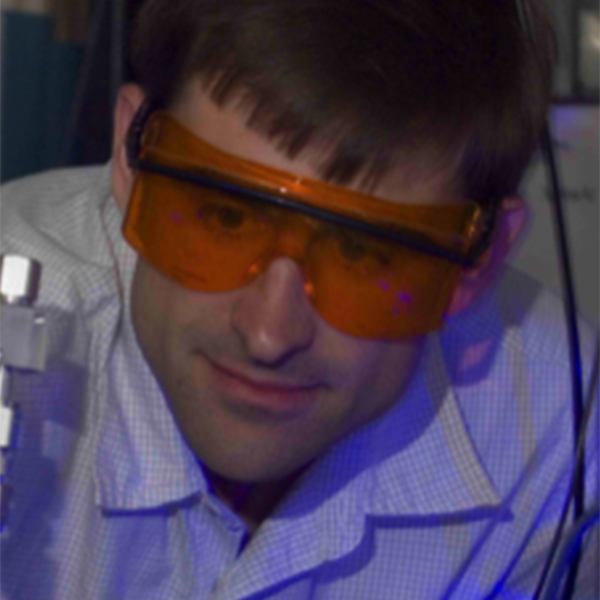Research Areas
- Ultracold Matter
Research Description
Thomas Killian’s research group studies ultracold neutral plasmas and quantum degenerate atomic gases. Both experiments start with laser-cooled and trapped neutral strontium. Laser-cooling is a powerful technique for producing and trapping atoms at temperatures as low as one millionth of a degree above absolute zero. Under these exotic conditions, matter behaves in fundamentally different ways, and the exploration of this regime teaches us about the basic laws of nature and lays the foundation for powerful new technological advances.
The current focus for our experiments with quantum degenerate gases is the creation and study of strongly interacting, many-body systems. In the quantum realm, the highly entangled wavefunctions in these systems lead to the emergence of new physics, such as superfluidity, superconductivity, and magnetism. Ultracold atoms offer many advantages for these experiments, such as the ability to control atom interactions with magnetic and optical fields, and the ability to control sample geometry and even dimensionality with atom traps made with interfering laser beams. We are currently studying the use of laser fields to control interactions and form exotic molecular states in strontium Bose-Einstein condensates. We are also using lasers to excite atoms in the quantum degenerate gas to highly excited Rydberg states. This introduces strong, long-range interactions between atoms, and is predicted to lead to exotic states of matter such as supersolids, which have long-range order of a solid and frictionless flow of a superfluid.
Biography
Thomas C. Killian received a BA in Physics in 1991 from Harvard University, and then attended Cambridge University on a Marshall Scholarship, where he earned an MPhil in physical chemistry in 1993. At the Massachusetts Institute of Technology he studied Bose-Einstein condensation in atomic hydrogen and completed his PhD in 1999. As a post-doctoral fellow at the National Institute of Standards and Technology, he initiated experiments on ultracold neutral plasmas, and in 2001, he joined the Physics and Astronomy Department at William Marsh Rice University, where he continues work on matter at extremely low temperatures. Through collaborations with researchers in the Texas Medical Center, he is also applying experimental techniques from atomic physics to control and characterize biological structures with electromagnetic fields, and is involved in biotech startup n3d Biosciences, Inc. (www.n3dbio.com). Dr. Killian is a recipient of the David and Lucille Packard Foundation Science and Engineering Fellowship and the Alfred P. Sloan Research Fellowship. In 2010, he was elected a Fellow of the American Physical Society, and in 2012, he became Chair of the Department of Physics and Astronomy at Rice.
Selected Publications
1. M. Yan, B. J. DeSalvo, Y. Huang, P. Naidon, and T. C. Killian “Rabi Oscillations between Atomic and Molecular Condensates Driven with Coherent One-Color Photoassociation,” Phys. Rev. Lett. 111, 150402 (2013).
2. M. Yan, B. J. DeSalvo, B. Ramachandhran, H. Pu, and T. C. Killian, “Controlling Condensate Collapse and Expansion with an Optical Feshbach Resonance,” Phys. Rev. Lett. 110, 123201 (2013).
3. B. J. DeSalvo, M. Yan, P.G. Mickelson, Y.N. Martinez de Escobar, and T.C. Killian, “Degenerate Fermi Gas of 87Sr,” Phys. Rev. Lett. 105, 030402 (2010).
4. Y. N. Martinez de Escobar, P. G. Mickelson, M. Yan, B. J. DeSalvo, S. B. Nagel, and T. C. Killian, ``Bose-Einstein Condensation of 84Sr,” Phys. Rev. Lett. 103, 200402 (2009).
5. T. C. Killian, “Ultracold Neutral Plasmas,” Science 316, 705 (2007).
6. T. C. Killian, S. Kulin, S. D. Bergeson, L. A. Orozco, C. Orzel, and S. L. Rolston, “Creation of an Ultracold Neutral Plasma,” Phys. Rev. Lett. 83, 4776 (1999).
7. D. G. Fried, T. C. Killian, L. Willmann, D. Landhuis, S. C. Moss, D. Kleppner, and T. J. Greytak, ``Bose-Einstein Condensation of Atomic Hydrogen,” Phys. Rev. Lett. 81, 3811 (1998).

